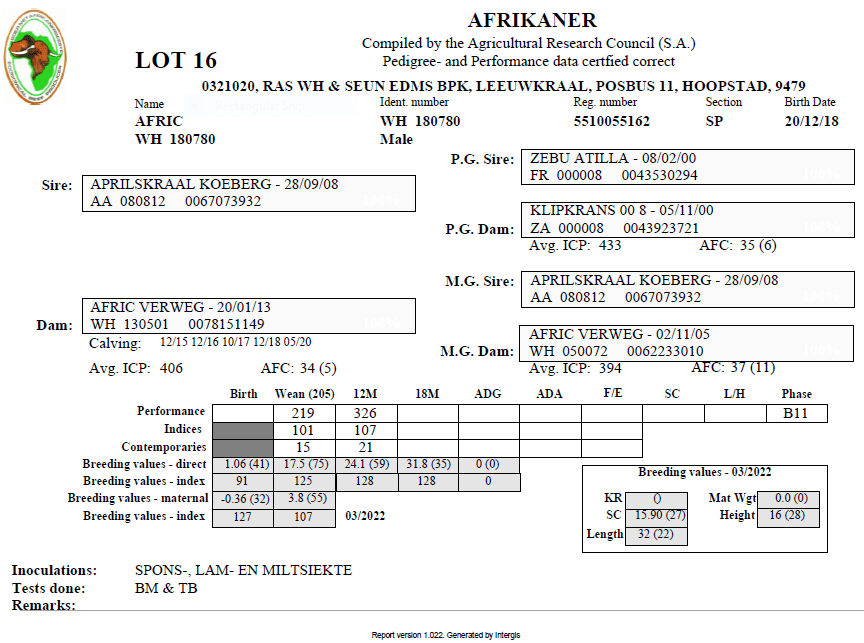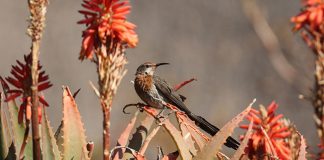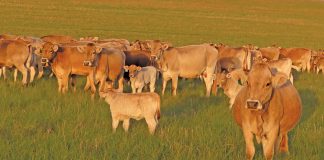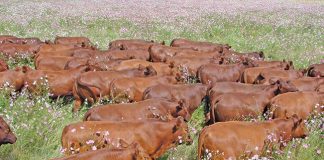
The importance of breeding objectives for a commercial herd was discussed during the Afrikaner Bushveld Study Group’s ‘School of Beef’, hosted at the recent Thabazimbi Show.
Breeding objectives should be tailor-made for each herd, depending on the environment, breed type, market requirements and production system. Selecting specific breeding material to improve your herd can be a challenging process.
The lack of specific breeding goals for your herd could result in the aimless selection of a breeding bull, and this can place the genetic potential of your cowherd at a disadvantage.
The interpretation of the auction catalogue, especially on traits of economic importance such as fertility and growth, are essential tools for the commercial beef producer. Fertility and growth will enhance the optimum number and weight of weaner calves, in order to improve profitability.
Importance of the breeding bull
Best Linear Unbiased Prediction (BLUP) information on the catalogue is based on performance data and is an unbiased, objective method to identify superior genetics. The physical appearance of a breeding bull is however just as important to ensure functional efficiency.
Although functional efficiency is a subjective inspection by breed inspectors, it is important to note that the process is based on minimum breed standards, which would also ensure functionality.
Traits (good or bad) are heritable and the purpose of selection is to ensure superior genetics and improvement. The heritability of growth traits is fairly high and an inferior bull may influence the performance of a herd negatively. The wrong bull for your herd could end up breeding calves with lower weaning weights.
The selection of the ideal breeding bull is probably one of the most popular topics for discussion during auctions, as its importance and genetic influence, can never be underestimated.
Although bulls are only 3% of a herd’s composition, they genetically contribute 50% towards each calf. If his heifers are selected for replacement, the genetic influence of a bull becomes even more prominent in a herd, for years to come.
Always keep in mind that the bull also carries genes influencing the milk production potential of his daughters.
Fertility
The breeding value for scrotum circumference, which is an indication of semen quantity, the inter-calving period of the dam and the number of calves produced, could assist the buyer to evaluate the fertility status of the bull. The semen quality test, done prior to the auction, can be requested from the owner.
Auction catalogue as a selection tool
The interpretation of the auction catalogue may be challenging for buyers, and for this specific reason, it is often ignored. The limited time between lots during the auction also does not allow enough time to really interpret all the information at hand.
Best practice would be to get a copy of the auction catalogue, at least a few days prior to the auction, to allow proper selection of potential breeding stock.
Bulls on offer have already been inspected and passed the test for functional efficiency, which is a method of quality control. But by just visually selecting a bull and ignoring the performance information available is similar to buying a vehicle without looking at its specifications, such as engine size, performance, etc.
The information on the catalogue is readily available to enable the buyer to make a more informed decision on traits that cannot be seen by the naked eye.
Questions such as which bull’s progeny will grow faster, have more milk, or limit calving difficulty when mated with heifers, can be determined by the interpretation of the performance information on the auction catalogue.
Frame type
Breeding bulls are usually purchased at a relatively young age of about three years. Body length and height vary within a herd and even more so between different herds and environments.
The breeding values for these two traits make it possible for the buyer to determine the frame type of a bull and whether it will fit into his production environment.
These traits are important to consider, in order to limit adaptation challenges, especially when buying breeding stock from a different environment.
Phenotype vs genotype indexes
It is important not to confuse the phenotypic and genotypic traits that appear on the catalogue. The phenotypic indexes are indications of the performance of an animal within his contemporary weighing group.
Genotypic indexes are the genetic ranking of an animal within the breed. The principle of an index value of 100 as average is applicable to the breeding value index.
The guideline of the index, to be within the range of 90 to 110, is also applicable to avoid extremes on specific traits.

Criteria when a bull is selected for a breeding goal
- To be mated with heifers without the risk of calving problems: breeding values for birth direct on or below breed average.
- Breeding replacement heifers: above breed average for wean direct and on breed average for wean maternal. This is more of a balanced approach.
- Corrective mating: a specific limitation, for example very low weaning weights, can be corrected by using a bull with extreme breeding values for wean direct and maternal.
- Maximum growth: above breed average for growth at wean, as well as for post-wean traits.
- Terminal breeding: all progeny gets slaughtered. The female offspring is not suitable as replacement heifers because of the extreme breeding values on growth. Mate these bulls with mature cows to avoid calving problems.
- To improve reproduction or fertility of your herd: always keep the reproduction statistics of the bull’s dam in mind. In addition to this, the scrotal circumference breeding value of the bull has to be on or above breed average.
- Beef breeders are primarily meat producers, and calf growth in the post-wean phase will always be important, particularly to feedlots. For this reason, it is important for the breeding bull to be at least on breed average for growth traits such as weaning, one-year and 18-month weights.
- Be cautious of extreme breeding values for post-wean weights. Weight at 18 months of age is an indication of mature weight, and if selection on growth is your only priority, the result will be bigger cows, with higher maintenance requirements. A poor or extensive environment cannot support these bigger-framed animals. This will, in turn, negatively impact fertility.
Information in catalogue
Apart from the lot number information and contact details of the current owner, the sex, name and identification number of the animal, the section and birthdate appear on the top of the page. The pedigree information can also be valuable for buyers who want a son of a well-known sire or dam.

Production
The phenotypic weaning weight is adjusted for age to a 205-day weight. This is done in order to ensure comparison between calves of different age groups in the same contemporary group.
The breeding value is followed by an accuracy percentage value in brackets, which is an indication of the reliability of the breeding value. (A higher accuracy indicates more information was available to calculate the breeding value.)
Reproduction
The dam’s reproduction information includes her calving records, age at first calving, and the average inter-calving period.
Summary
Try to get hold of the auction catalogue before the auction and make a shortlist of bulls that fit into your breeding goals. On the day of the auction, you can still select your favorite bull out of this shortlist.
Be aware of extreme breeding values. An aesthetically pleasing bull may not have the desired breeding values, but a bull with desired breeding values may also be aesthetically pleasing!
Experienced ARC personnel in the beef industry are available in all provinces and can be contacted for assistance with any of the above-mentioned, as well as for other field-related services such as real-time ultrasonic scanning, bull growth testing and selection of breeding material.
For more detail, email Jordaan at [email protected], or call him on 012 672 9085.











